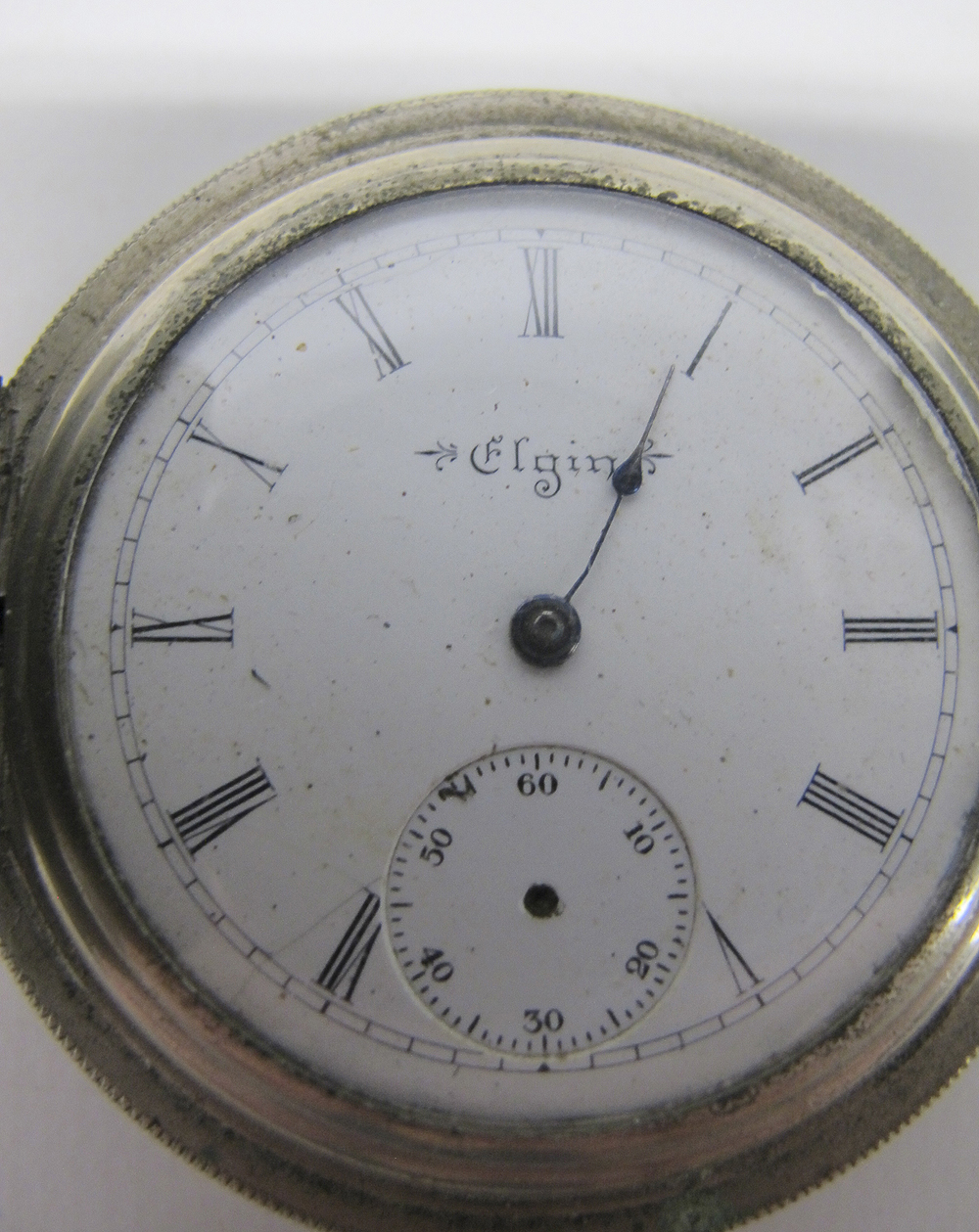

We sometimes hear people calling their hunter-cased watches side-winders because the winding stem is at 3:00.

Note that it's only called a side-winder if it is a hunter-case movement in an open-face case. While this doesn't present any real operational difficulties, a side-winder is generally not considered to be a "correct" matching of movement and case. When a hunter-case movement and dial are mounted in an open-face case, it is called a "side-winder" because the winding stem will now be at the 3:00 position instead of the "normal" 12:00 position. The primary difference between a hunter-case movement and an open-face movement is the relative positioning of the winding arbor and the seconds bit, and the positions of the dial-feet. Movements were made either for a hunter-case or for an open-face case. Note that in the photos above, the winding stem is at the 3:00 position on the hunter-cased and demi-hunter-cased watches, and in the 12:00 position on the open-face watch. Cases could be made of a wide variety of metals: gold, sterling silver, coin silver (made from melted US coinage), nickel, and plated brass. American pocket watches used a system of (relatively) standard watch sizes, so it was possible for a customer to select the watch movement they wished to purchase, and then select a case to hold it.

There were watch manufacturers and there were case manufacturers. What's important to know about antique American watches is that cases and movements were usually made by different companies. Shop by Category Pocket Watches All Auction Buy It Now 367 Results 4 filters applied Type Vintage Case Material Case Color Condition Price Buying Format All Filters Antique Watch 1700s 18th Century Julien Le Roy France 272 Rues Honore Pocket 340. The 'A' indicates the particular variant among their 18-1/2 ligne movements. al., for the diameter across the dial plate, slightly smaller than the American 16-size. It measures 18-1/2 lignes (the measure used by the Swiss, et. The case also includes (or accommodates) the winding stem and crown. It appears to be a Tavannes caliber 18-1/2 ligne - A, Ref. The watch case is the outer protective cover, including the crystal that covers the dial. the actual time-keeping mechanism of the watch. There are two distinct major "components" to most pocket watches: The watch case and the watch movement.
#Antique pocket watch identification professional#
We offer professional pocket watch crown replacement and refinishing. We've tried to provide answers to some of the more common questions about the proper care and handling of a vintage watch, in order to help you learn more about this fascinating area of American history. The watch crown is the button used to wind and set the watch. While we can't make you into an antique watch expert with just a few web pages, we hope we can share a little of our knowledge in order to help you learn more about your vintage or antique watch. Pocketwatch 101 ℠ – Learn about Vintage and Antique Pocket Watches Identifying Pocket Watches and Pocket Watch Case Types


 0 kommentar(er)
0 kommentar(er)
